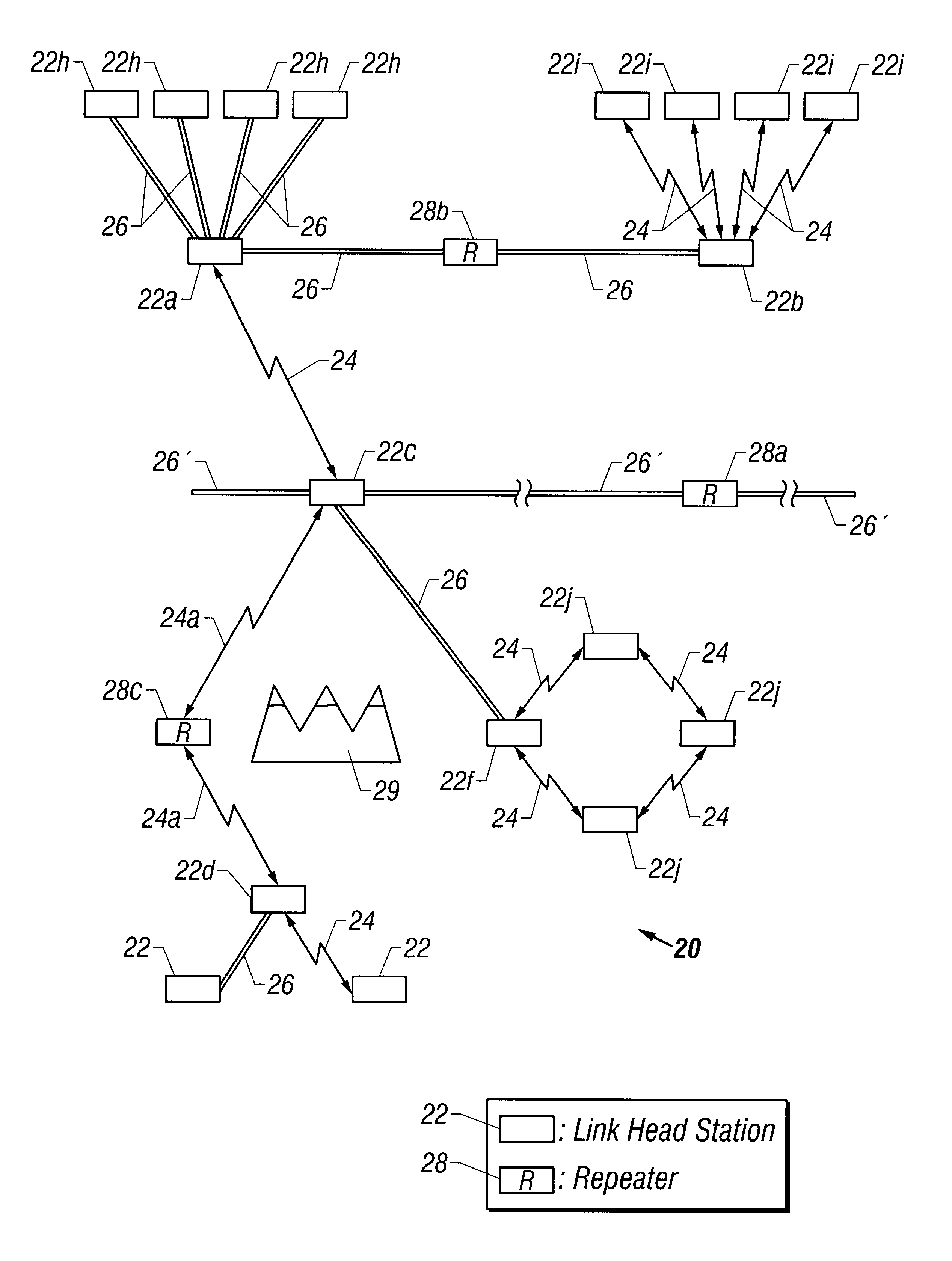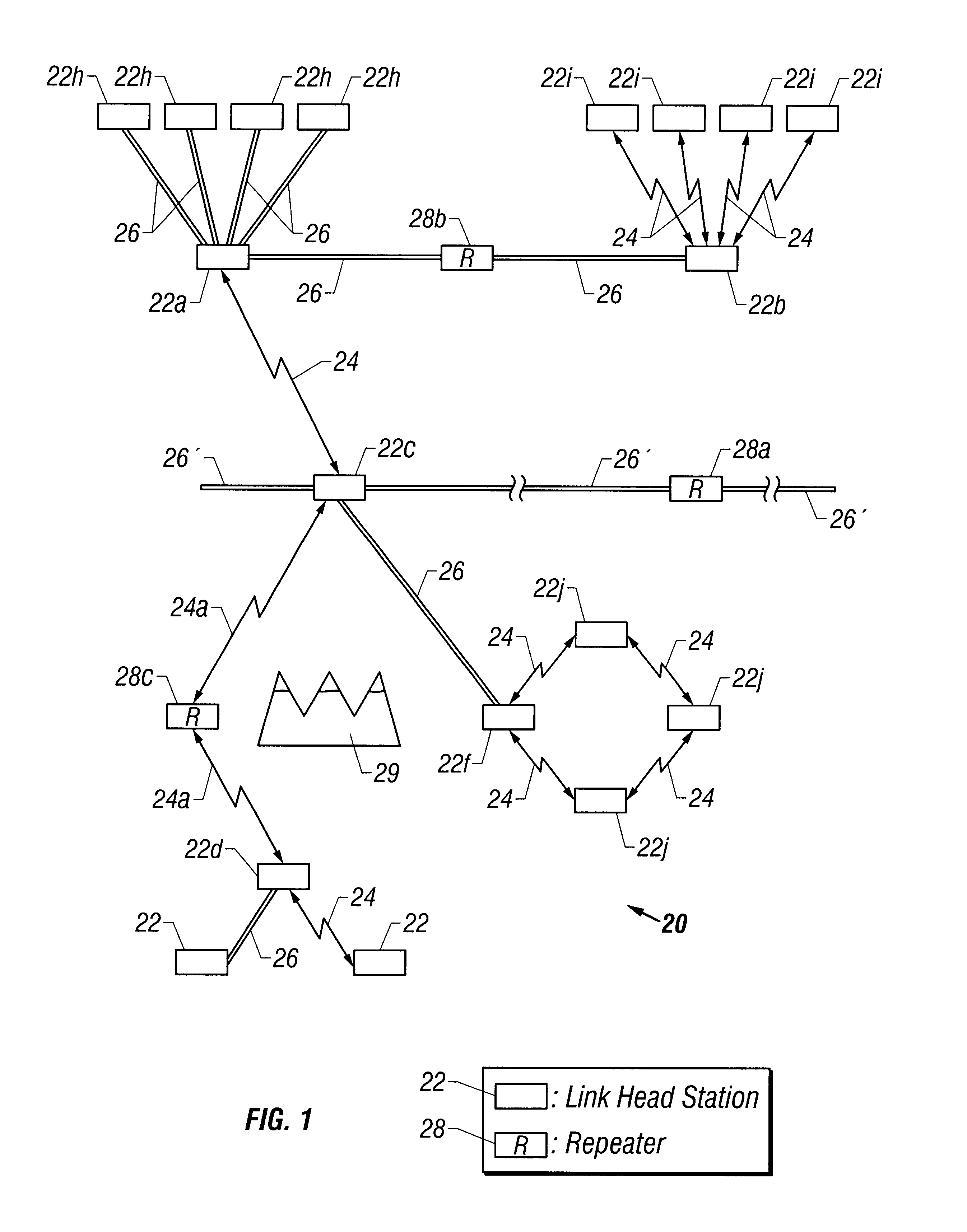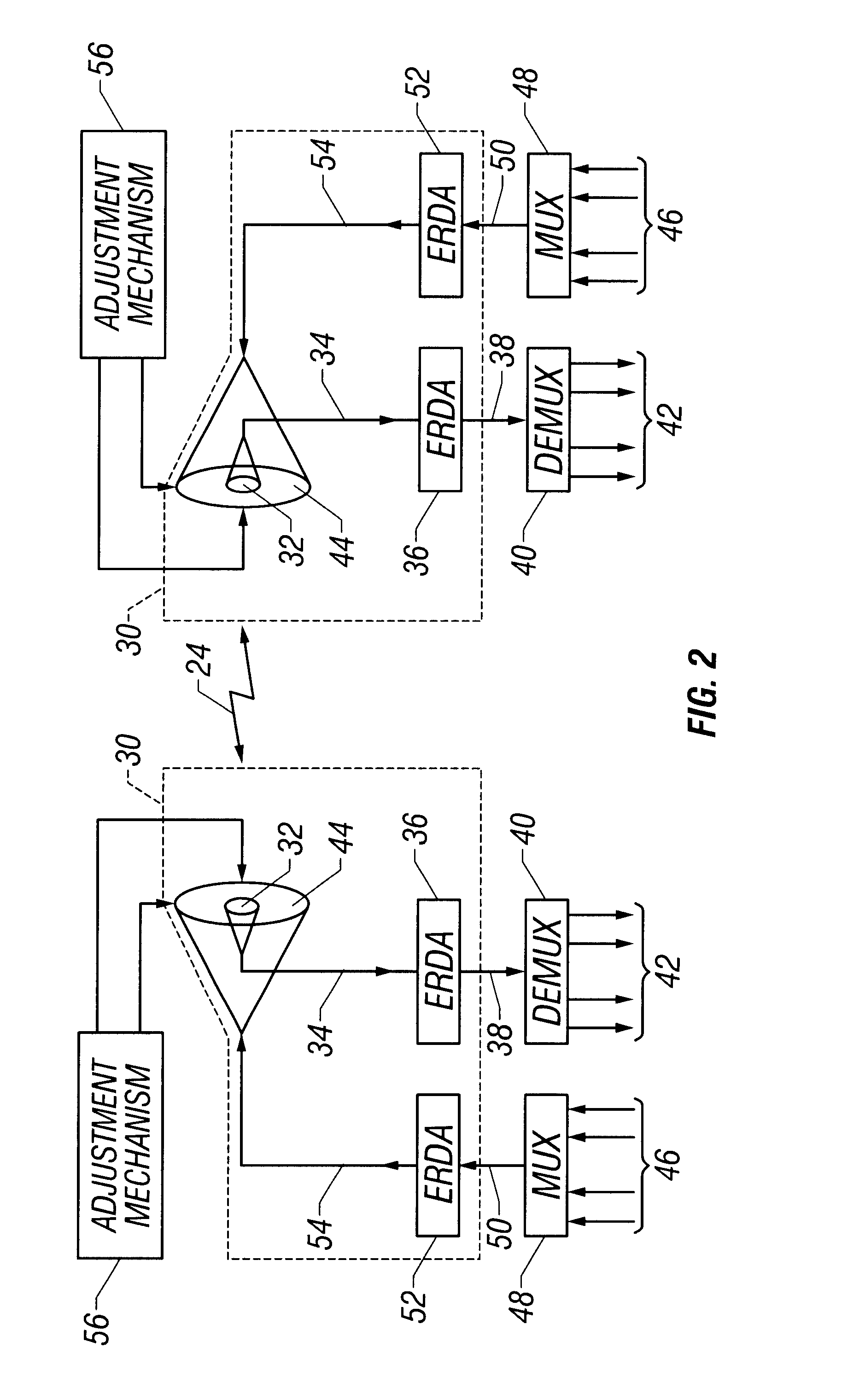Method and apparatus for free-space optical communication without eletro-optical conversion
a free-space optical and conversion technology, applied in the field of free-space optical communication without eletro-optical conversion, can solve the problems of difficult or impossible signal recognition, electrical wires introduce a practical limit to the physical length or distance over which information can travel, and use wired media for telecommunications and high-speed data communication, etc., to achieve the advantage of less penetrating wavelengths of erdas, the effect of minimizing the disadvantage of less penetrating wavelengths
- Summary
- Abstract
- Description
- Claims
- Application Information
AI Technical Summary
Benefits of technology
Problems solved by technology
Method used
Image
Examples
Embodiment Construction
[0042]The improvements of the present invention are incorporated in a terrestrial optical communications network 20 such as is shown in FIG. 1. The terrestrial optical network 20 includes a plurality of link head stations 22 between and through which optical signals are communicated. The optical signals are conducted over free-space optical links 24 and fiber optic conductor links 26 which extend between the link head stations 22. The free-space links 24 and the fiber links 26 are integrated together in the network 20 in a seamless manner, to avoid electro-optical conversion of the optical signals transferred between the free-space links 24 and the fiber links 26, and to communicate optical signals of the same frequency and wavelength over both the free-space and fiber links, in accordance with the present invention.
[0043]The optical signals conducted over the free-space links 24 and the fiber links 26 are preferably laser beams whose fundamental frequency or wavelength is encoded b...
PUM
 Login to View More
Login to View More Abstract
Description
Claims
Application Information
 Login to View More
Login to View More - R&D
- Intellectual Property
- Life Sciences
- Materials
- Tech Scout
- Unparalleled Data Quality
- Higher Quality Content
- 60% Fewer Hallucinations
Browse by: Latest US Patents, China's latest patents, Technical Efficacy Thesaurus, Application Domain, Technology Topic, Popular Technical Reports.
© 2025 PatSnap. All rights reserved.Legal|Privacy policy|Modern Slavery Act Transparency Statement|Sitemap|About US| Contact US: help@patsnap.com



